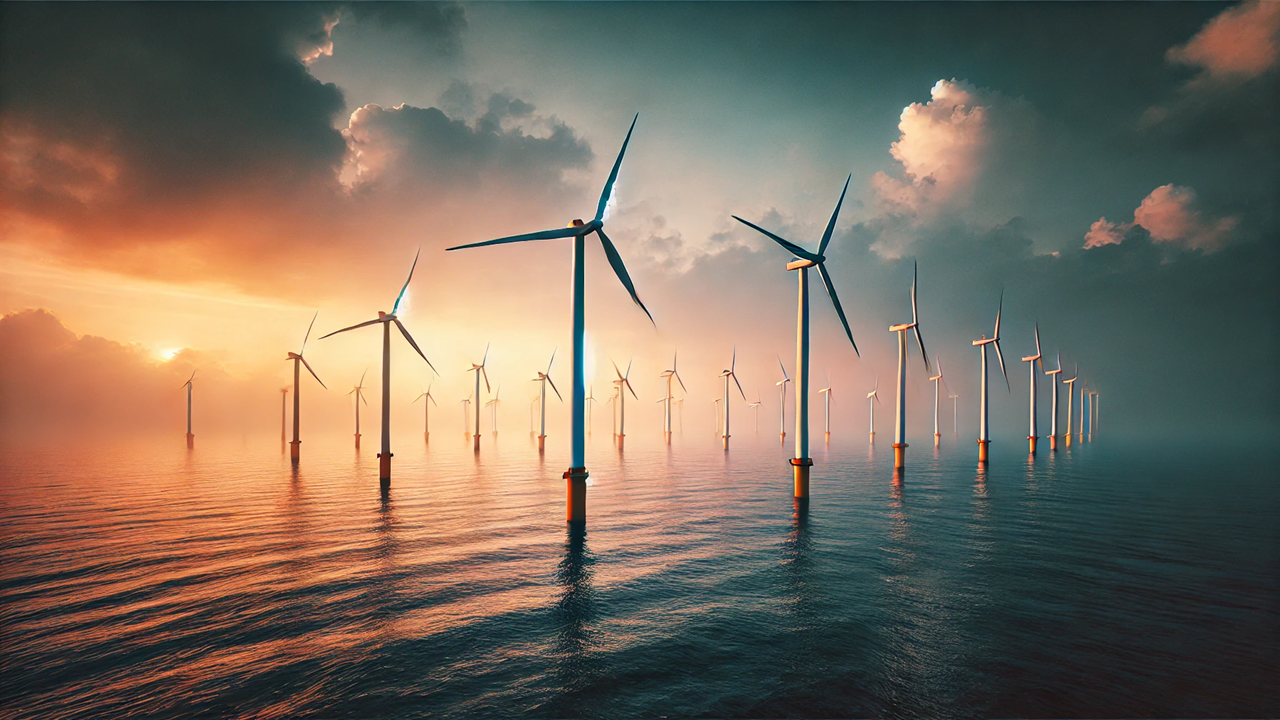Romania’s Offshore Wind Energy Revolution: A Path to Sustainability
Romania is poised to become a leader in offshore wind energy, with the potential to generate up to 7 GW by 2035. The World Bank's "Offshore Wind Roadmap for Romania" outlines the economic, environmental, and infrastructural benefits of this transition, while also addressing key challenges such as grid upgrades and environmental assessments. With swift government action, Romania could unlock significant economic growth and contribute to Europe's renewable energy goals.

Romania is setting the stage for a transformative shift in its energy landscape with the development of offshore wind (OSW) projects. A recent report, "Offshore Wind Roadmap for Romania," from the World Bank, highlights the immense potential of the Black Sea to generate clean energy and support Romania's climate neutrality goals. With the potential to install up to 7 GW of OSW capacity by 2035, Romania is poised to become a key player in Europe’s renewable energy market.
But while the opportunity is vast, the journey to making offshore wind a reality in Romania comes with challenges. In this article, we’ll explore the key findings of the report, its recommendations, and the road ahead for Romania’s OSW ambitions.
Offshore Wind: Romania’s Renewable Future
Romania already has 3 GW of onshore wind capacity, but its offshore wind resources are even more promising. With wind farms located at least 50 kilometers from the shore, and most in relatively shallow waters, Romania’s OSW could generate more energy than the country needs. This opens up the potential not only to meet domestic demand but also to export surplus energy, contributing to a more sustainable and integrated energy market in Europe.
The Black Sea, while not as windy as northern European waters, presents a unique opportunity for regional cooperation. Neighboring countries like Bulgaria, Türkiye, and Ukraine also have plans for offshore wind, and Romania's well-equipped port facilities, skilled workforce, and steel-based supply chain position the country as a key supplier to the growing regional OSW market.
Economic and Environmental Benefits
The potential benefits of offshore wind in Romania extend far beyond energy generation. The report projects that the high-growth scenario could create up to 77,000 full-time jobs by 2035, injecting over €5.3 billion into the local economy through gross value added (GVA). This economic boost comes from both the development of OSW projects and the associated supply chains, from manufacturing to maintenance.
From an environmental perspective, the development of OSW is essential for Romania’s energy transition. The report estimates that by 2050, Romania could avoid the emission of 230 million tonnes of CO2 through offshore wind energy alone. The transition to wind energy also offers substantial savings in water usage, further reducing Romania’s environmental footprint compared to conventional energy sources.
Challenges on the Horizon
While the benefits of offshore wind are clear, Romania faces several challenges in realizing this potential. One of the primary hurdles is the need for infrastructure upgrades, particularly in the transmission grid and port facilities. The current grid would need significant reinforcement to accommodate the influx of renewable energy from offshore projects.
Environmental concerns, particularly regarding avian migration routes over the Danube Delta, will also need careful consideration. The roadmap stresses the importance of conducting Strategic Environmental Assessments (SEAs) to mitigate any negative impacts on local ecosystems. Balancing environmental protection with energy development will be key to ensuring the long-term sustainability of OSW projects.
Another major challenge is the regulatory framework. To attract international investment and ensure the smooth execution of OSW projects, Romania must develop clear policies around leasing, permitting, and marine spatial planning. The report calls for the Romanian government to establish an offshore wind-specific legal framework that defines the necessary steps for exploration, licensing, and project delivery.
Government Action: Key to Success
To unlock Romania’s offshore wind potential, the government must act swiftly. The roadmap recommends setting clear OSW targets and integrating these into Romania’s broader energy strategy. The Ministry of Energy, along with other government bodies, must work together to create an investor-friendly environment. This includes offering competitive auctions for revenue support, improving grid connection policies, and ensuring access to public finance mechanisms like the EU’s Modernization Fund.
Investments in port infrastructure are also crucial. The roadmap emphasizes the importance of upgrading Romania’s port facilities, particularly around Constanța, to handle the construction and maintenance of OSW projects. Strategic investments in ports will not only support domestic wind projects but also position Romania as a regional hub for offshore wind manufacturing and logistics.
Incorporating hydrogen production as a means to store wind-generated electricity is another forward-thinking recommendation. As Romania’s OSW capacity grows, hydrogen could play a vital role in ensuring that renewable energy is efficiently stored and distributed, further enhancing Romania’s green energy credentials.
Romania stands at the cusp of a renewable energy revolution. With offshore wind energy offering a viable and sustainable path forward, the country has the opportunity to lead the way in the Black Sea region. However, the road to achieving its OSW potential will require strategic investments, robust environmental planning, and coordinated government action.
The roadmap laid out by the World Bank provides a clear and actionable framework. If Romania can address the challenges and seize the opportunities, offshore wind could transform its energy landscape, create jobs, and reduce its carbon footprint, setting a powerful example for energy transition in Europe.
- FIRST PUBLISHED IN:
- Devdiscourse










